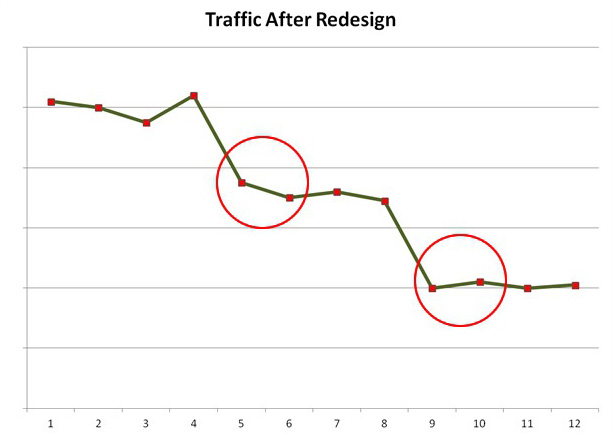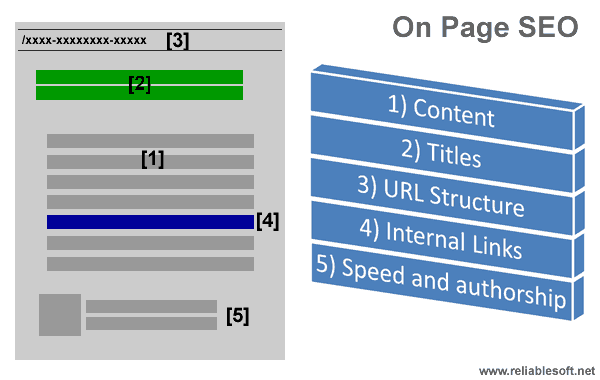Want to make your post keyword-targeted, SEO-optimized, and ready to drive more traffic?
Would you like to make it easier for search engines to understand what keyword(s) your blog should rank for?
If you answered “yes” to any of these, then you are about to learn the secrets of making your blog post keyword-targeted.
When it comes to optimizing a website or a blog post, there are two main factors at play:
On-page optimization
Off-page optimization
Today’s article will focus on on-page optimization, and I will be sharing lots of good on-page SEO techniques you should implement while working on optimizing your blog posts.
Now, let’s not confuse on-page SEO-optimization with onsite SEO-optimization.
Onsite SEO refers to the optimization of the entire website with things like sitemapping and setting permalink structures.
On-page SEO optimizes content for a target keyword within a single blog post. This includes using proper headings, proper keyword placement, ensuring content quality, and paying attention to many other factors.
Why Do You Need On-Page Optimization?
Now, when some bloggers hear the term “SEO-optimized articles”, they think this is some kind of bad practice.
But it’s not only not bad, it’s necessary.
Here’s what Harsh had to say about his effort to recover from Google Panda:
Search engines are nothing but a set of algorithms. They look into various factors to rank your page for certain keywords. Now, we need to help search engines identify that target keyword from the post in order to make that post more relatable to readers.
Here is some food for thought:
Well, there are likely a lot of reasons, but if you aren’t paying attention to SEO, then that’s probably the biggest reason.
So when we do SEO-optimization of a post, we follow a certain set of proven methods to rank it higher on a search engine.
Now, Google doesn’t only consider on-page SEO score when ranking an article. It also takes into account many other factors like social media signals (shares, likes, tweets, follows, etc.), backlinks, domain authority, and many other off-page metrics.
Our goal with on-page SEO is to optimize an article in a natural, but smart way, so that search engines can easily pick out the target keyword and bring our website targeted visitors.
Before you read more, I assume you know about keyword research and how to find keywords to target. If not, check out these posts:
Here is some food for thought:
Well, there are likely a lot of reasons, but if you aren’t paying attention to SEO, then that’s probably the biggest reason.
So when we do SEO-optimization of a post, we follow a certain set of proven methods to rank it higher on a search engine.
Now, Google doesn’t only consider on-page SEO score when ranking an article. It also takes into account many other factors like social media signals (shares, likes, tweets, follows, etc.), backlinks, domain authority, and many other off-page metrics.
Our goal with on-page SEO is to optimize an article in a natural, but smart way, so that search engines can easily pick out the target keyword and bring our website targeted visitors.
Before you read more, I assume you know about keyword research and how to find keywords to target. If not, check out these posts:
According to Searchmetrics, here are the latest search engine ranking factors:
4. Keyword Density
You should keep the keyword density around 1.5% percent with a mix of LSI keywords. But as Matt Cutts explains in the video below, there is no real magic formula.
Use your main keyword once in the first paragraph and again in the last paragraph. And use it in the content where it makes sense.
Check out:
5. Meta Tags
You should add a unique and relevant meta description with each blog post.
Again, you should use your use targeted keyword in the meta description, but don’t keyword spam your description. While search engines pick up on keywords, it’s also important for users to click on the post. You need to write user-friendly meta descriptions that make sense and are related to your post.
With regards to meta keywords, Google has made it clear that they don’t care about them. But some search engines, like Bing, may still care a little.
. Images
Image optimization does help a lot in driving traffic from image searches.
Keywords in the “image title” and the “alt text” help to make your blog post more focused and targeted.
But more important than that:
Images create engagement.
And the more engaged a user is, the more likely they’ll stick around, thus increasing your overall rank.
But there’s one very important point to note. Large images will slow down your site, and having a slow loading site will decrease your Google rank. So it’s very important to:
For more about how to speed up your site, check out:
For more on images, check out:
7. Word Count Per Post
Blog posts that don’t have a lot of words typically don’t perform well on search engines. That’s because they’re usually seen as being “less informative”.
Ofcourse there are exceptions, but for a general information-based blog, creating posts with at least 500 words is pretty standard.
It’s always better to be well-researched and overly informative than it is to not provide enough information. This is especially true if you’re targeting highly competitive keywords.
Suggestion: Analyze other posts for your target keyword and see how many words they have.
While there is no “official” count, longer posts tend to rank better because there is typically more information there. For instance, this post is over 2,000 words.
But be careful not to over do it.
For more on writing informative content, check out:
8. Internal Linking
Place links to related posts from your blog inside of your blog posts.
Interlinking of blog posts will help your blog readers spend more time on your blog, and it will also help pass page rank to other pages of your site.
When interlinking, try to use a keyword as the anchor text, but be very careful not to overdo it.
Internal links that are relevant to the original post show search engines that you are providing extra information beyond what is being displayed in the content.
But make sure your interlinking is relevant and necessary.
For more on interlinking, check out:
9. External Linking
Apart from linking to your own blog posts, it is a great idea to link out to external websites as well. Again, only do this if the information on the external website is relevant to the information in your post.
While linking out to external websites, you should link to trusted websites only. And if you have doubts about the authority or popularity of a website, you can use a nofollow tag to avoid passing your link juice to potentially bad sites.
You should use dofollow links for trusted websites and nofollow links for those that are less trustworthy.
But somewhere authoritative like Wikipedia, or CNN, or a major player in your niche, will not only be trustworthy, they’ll likely have relevant content that your readers will love.
This will make your site appear more credible.
10. Write Engaging Content
You should write engaging content. Period.
If you’re trying to get by with low-quality content and “trick” search engines, you will surely fail.
Your post should be a complete manual for that keyword. You should learn how to engage your audience in a way that works for them. Try asking your readers questions and answering them. Understand what they want to read, and then write that.
If you are unable to write engaging content, people will not spend much time on your blog, your bounce rate will increase, and your rankings will plummet.
For more on creating great content, check out:
On-Page SEO Checklist:
Here is a checklist you can use to make sure you are doing everything possible to rank higher in search engines.
Keyword placement:
Other things:
Other things not mentioned here:
Things not to do:
Things to focus on:
Here are the last year SEO trends by Midasmedia:
Resource By : https://www.shoutmeloud.com/on-page-seo.html























